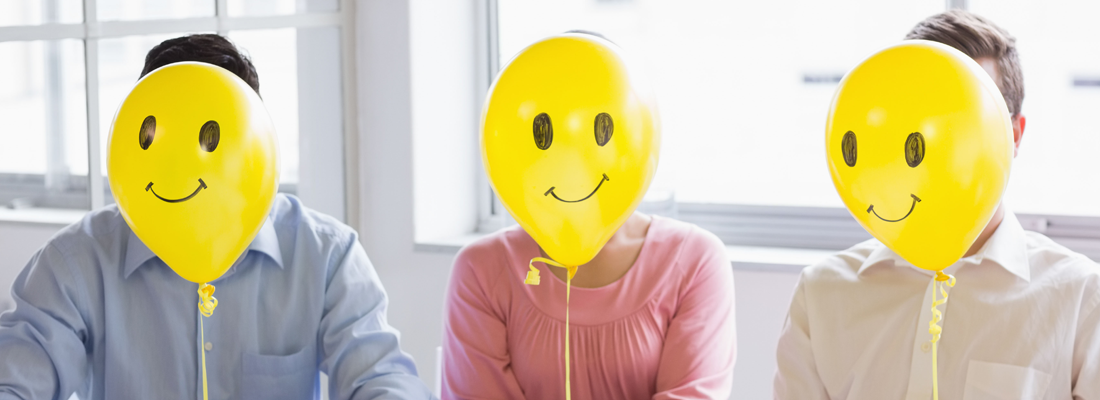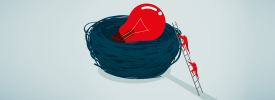
While many of this year’s headlines veered towards the negative, 2018 also gave us some reasons to be cheerful – not least in the way we work. Alexander Garrett celebrates the positives
1. The gender pay gap came into the open
This year, the UK and Germany both introduced laws requiring businesses to introduce mandatory gender pay gap reporting for employers, with the results published in the public domain. “Other people’s salaries are still taboo in Germany," explained Acting Women’s Affairs Minister Katarina Barley.
The first set of UK results(1) were predictable: almost eight out of ten employers pay men more on average than women, and the median gap across all employers was a meaty 9.8 per cent.
Naturally, the global impact of the gender pay gap is huge. A report by the World Bank(2) in May revealed that the gender pay gap costs the global economy $160tn each year. “Equal pay, equal hours and equal participation in the workforce could lead to a global wealth jump of $23,620 a person, as well as creating knock-on benefits such as lower malnutrition and child mortality rates,” the report said.
The impact of this report has led to renewed discussion about programmes and policies that make it easier for women to get to work, access basic infrastructure and financial services and control land. “Finally, women are realising that they have a right to talk about pay and they cannot be silenced,” says Sam Smethers, chief executive of the Fawcett Society, the UK’s leading charity campaigning for gender equality and women’s rights. “By finding out what their colleagues earn, they are then in a position to challenge any pay inequality.”
Productivity power boost: When women win, we all win. Closing the gender pay gap increases productivity because it increases the talent pool and boosts diversity – something that’s proven(3) to have an impact on a business’s bottom line.
2. Gardens became part of the office
Forget a plant on your desk – 2018 marked the start of the wholesale adoption of greenery in the office, with the joint goals of wellness and productivity in mind.
When ApplePark, Apple’s new HQ in Cupertino, California, completed construction and landscaping in February 2018 it included apricot orchards and more than 9,000 newly planted trees. Google’s new London HQ, due to start construction in 2018, will have a 300-metre-long rooftop garden, with ponds, greens and shrubberies.
A new two-tower development by Make Architects in London has the City of London’s biggest new garden since the Barbican was built in 1982, and there’s also a growing trend for companies to sponsor vegetable gardens for employees(4).
Filling your office with greenery is “an excellent way to combat both sick days and stress” according to Danica-Lea Larcombe, a doctoral student at Australia’s Edith Cowan University. “Ideally, you want plants that will ‘scrub’ the air of pathogens, improve the office’s mix of bacteria, and survive in low light with little care.”
Productivity power boost: There are tangible benefits to a company’s bottom line from enriching the workspace with plants or other elements, says Dr Craig Knight at the University of Exeter(5). When his researchers introduced £10,000 worth of plants into the offices of one of London’s big four accountancy practices, productivity increased by around 15 per cent.
Research shows that a relaxed workplace is a happy workplace
3. Businesses got more relaxed
The days of strict dress codes and rules on employee appearance seem to be on the way out. A survey by UK hotel group Travelodge found that only one in ten British office workers now wears a suit.
Even ‘business casual’, popularised by Silicon Valley in the 1980s is being replaced by ‘casual casual’. On both sides of the Atlantic, yoga pants in the office are now, genuinely, a ‘thing’, with skin-tight leggings in leather or inspired by the equestrian lifestyle both green-lighted by the fashion press(6) as wholly office-appropriate.
A PWC report(7) puts this down to the growing influence of the Millennial workforce. This group “tend to be uncomfortable in rigid corporate structures,” it says. They value “a flexible approach to work,” and seek “similar things in an employee brand as they do in a consumer brand.”
But it’s not just workwear. In terms of embracing a more relaxed ethos, the 2018 World Cup saw companies around the world give workers time off to watch in June and July. While further evidence of the global breakdown of office formality came with news that an Indian version of satirical TV show, The Office, is in the works – confronting that country’s rigidly hierarchical workplace.
Productivity power boost: A relaxed workplace is a happy workplace. Research from the University of Warwick(8) found that happiness led to a 12 per cent spike in productivity, while unhappy workers proved to be 10 per cent less productive.
4. We embraced flexible workspace
A report by Cushman & Wakefield, Coworking 2018(9), found that flexible workplaces now account for almost 20 per cent of new office lets in London, while the provision of flexible spaces is booming across the UK’s regions.
Globally, the market is growing fast and by the end of 2018 some 1.7 million people around the world will work in co-working spaces, according to deskmag’s Global Coworking Survey(10).
“Companies increasingly see flexible office space as a key element of their corporate portfolios and expect to make far greater use of this type of space over the next three years than they do currently,” reports CBRE’s EMEA Occupier Survey(11). “Innovation and talent are increasingly mentioned as reasons for taking flexible space.”
Productivity power boost: There’s plenty of evidence to support the link between productivity and the flexible workspace(12), not least the numerous studies(13) that show that people who like their workspace are more productive.
5. AI applications helped us work smarter
OK, so the robot revolution may not be here just yet, but new products and prototypes are starting to change the way we carry out simple tasks in the office.
Chatbots are becoming increasingly pervasive, especially in marketing and customer services. AlterEgo, a new interface(14) developed by researchers at MIT, can take dictation without you even having to speak out loud.
The system consists of a wearable device and machine-learning software. Electrodes pick up neuromuscular signals in the jaw and face that are triggered by saying words “in your head”. This could even mean you “talk” to your computer, in the quietest office environments, or even during a meeting.
Google’s Pixel Buds(15) earphones, meanwhile, allow you to translate your conversation from 40 different languages in real time. The Buds, which shipped at the beginning of 2018, are “like having a personal translator by your side”, says Google.
Productivity power boost: With AI able to handle mundane and repetitive tasks across an organisation, this frees up people to exercise creativity, solve complex problems, and otherwise focus on getting impactful work done, according to intelligent service desk Spoke(16).
Alexander Garrett is a British freelance journalist who writes on a wide range of business issues for the UK press
Sources:
(1) https://www.gov.uk/government/news/100-of-uk-employers-publish-gender-pay-gap-data
(2) https://openknowledge.worldbank.org/bitstream/handle/10986/29865/126579-Public-on-5-30-18-WorldBank-GenderInequality-Brief-v13.pdf?sequence=1&isAllowed=y
(3) http://fortune.com/2017/01/18/leadership-diversity-bottom-line-career-advice/
(4) https://www.theguardian.com/small-business-network/2018/feb/19/gardening-leave-why-are-offices-turning-into-botanical-spaces
(5) https://www.theguardian.com/small-business-network/2018/feb/19/gardening-leave-why-are-offices-turning-into-botanical-spaces
(6) https://www.vogue.co.uk/gallery/leggings-fashion-trend-2017
(7) https://www.pwc.com/m1/en/media-centre/articles/winning-the-hiring-war-for-millenials.html
(8) https://www.fastcompany.com/3048751/happy-employees-are-12-more-productive-at-work
(9) http://www.cushmanwakefield.co.uk/en-gb/research-and-insight/2018/coworking-2018
(10) http://www.deskmag.com/en/background-of-the-2018-global-coworking-survey-market-research
(11) https://www.cbre.nl/en/research-and-reports/EMEA-Occupier-Survey-2018
(12) https://www.iwgplc.com/WorkspaceRevolution/Index
(13) https://www.forbes.com/sites/jacobmorgan/2015/12/03/how-the-physical-workspace-impacts-the-employee-experience/#6ac1df0779ea
(14) http://news.mit.edu/2018/computer-system-transcribes-words-users-speak-silently-0404
(15) https://support.google.com/googlepixelbuds/answer/7573100?hl=en-GB
(16) https://www.information-management.com/opinion/how-artificial-intelligence-will-replace-todays-it-service-desk



